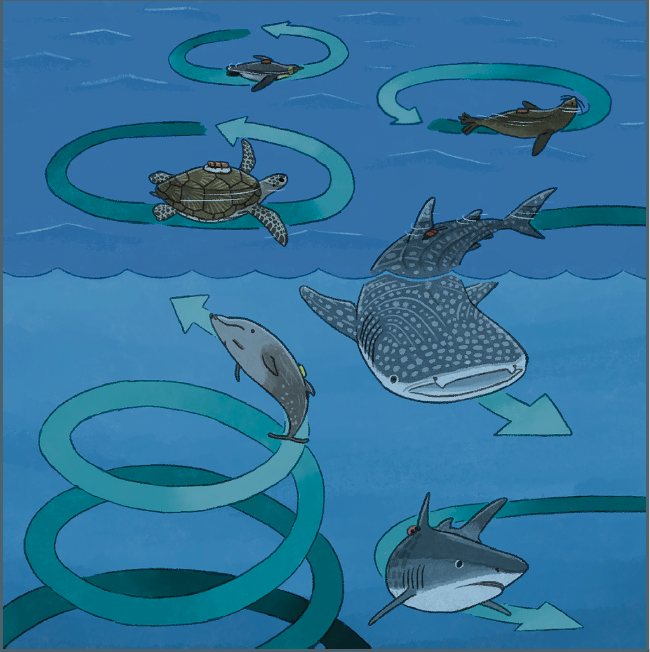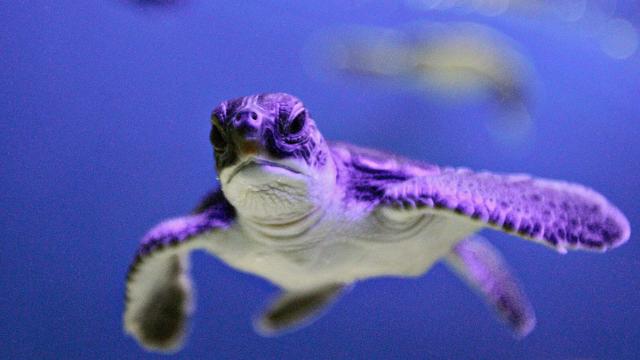Marine researchers in Japan and elsewhere have discovered yet another enigma of the aquatic world. In a new paper out Thursday, they detail their finding that various species of large sea animals, from turtles to sharks to seals, swim in circles for no clear reason. This circling could have several purposes for the animals, such as aiding their navigation or foraging for food, the researchers say.
According to the researchers, recent advances in technology have allowed scientists to get a fuller picture of how animals in the ocean move through their environment with much better precision than before. Lead author Tomoko Narazaki, from the University of Tokyo, and his colleagues decided to put this tech to good use by looking at the movements of green sea turtles during their nesting season, when female turtles return to their birthplace to lay eggs.
They moved turtles from their nesting location to elsewhere, so that they could observe how they navigated back to the original spot. But once they did, they spotted a peculiar pattern: the turtles would often circle at a relatively constant speed at least twice around, then go back to their normal swimming as they ventured back home.
Curious, Narazaki told others in his field about the discovery. Eventually, he teamed up with some of these researchers to look back at movement data that had been collected earlier about a range of other marine animals across different branches of the evolutionary tree. And sure enough, they found the same sort of circling behaviour pop up repeatedly. These circling animals included fish (tiger sharks), birds (king penguins), and mammals (Antarctic fur seals and Cuvier’s beaked whales).
Their work is published in iScience.
“All of the data used in our study was initially collected for different purposes (e.g., to study foraging behaviour of sharks etc.). Data of each species was analysed by different co-authors for different aspects,” Narazaki told Gizmodo in an email. “So, it took a while for us to realise that this circling is a common behaviour across many species — until we collaborated.”

On the surface, circling is hardly practical for these animals’ survival, since the most energy-efficient way to travel anywhere in the ocean is usually a straight line. So that probably means it has one or more important functions that are worth the extra effort. Right now, though, all the team has are some educated guesses as to what’s going on, which may vary between different species.
The sharks, for instance, seem to circle most often around where they get food, indicating that it provides some advantage in hunting. Meanwhile, other research has shown that some species of whales will use circling in groups as a way to create “bubble nets” to catch their small fish prey. But feeding likely isn’t the only purpose for circling.
In at least one male tiger shark, the team found evidence that circling was part of its courtship ritual in front of a female. Seals and penguins seem to circle most often near the water’s surface or outside of their typical foraging hours, both of which indicate it isn’t part of their feeding technique. The team also cited earlier research that found northern elephant seals will circle during their drift dives — lazy, passive dives that help them rest or process their last meal.
In the turtles, the circling may help them reorient their navigation skills, which rely on smell, sight, and sensing magnetic fields. The turtles would frequently circle just before the last stretch of their journey, and for a while, too. One turtle was observed to circle a whopping 76 times before moving on.
“Given that similar circling behaviour was observed across a wide variety of marine megafauna taxa, it might be possible that it is a behavioural convergence having similar purposes,” Narazaki said. “But, for now, the purpose and the function of this behaviour remain unknown.”
Of course, we know that lots of animals on land circle for various reasons (just ask your nearest dog before he poops). But the obscurity of the vast ocean means there are probably all sorts of behaviours commonplace among these animals that we simply haven’t gotten to see yet. By studying the how and why of marine circling more closely, the researchers hope to illuminate this almost alien world a bit more.
“For the next step, we would like to examine animal movements in relation to animals’ internal state and environmental conditions to examine why they circle,” Narazaki said. “Some hypothesis-testing experiments would be necessary to understand the function and mechanism underlying circling movements.”
